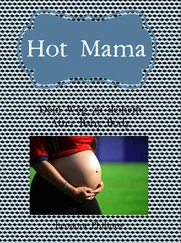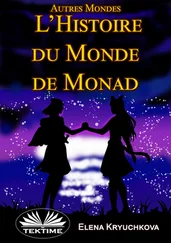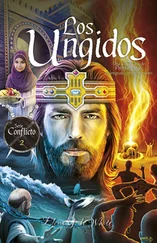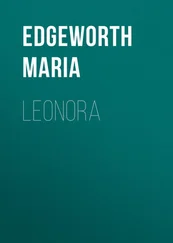Leonora transforms her liberty into a life force.
‘Mama, the freer I feel, the better I paint. I am continually making progress, thanks to this immense force I know I have within me.’
Maurie listens to her daughter with interest, for she too believes that some of the doors of perception still remain closed, and that philtres and charms hold the keys to unlock them. She gives Leonora a copy of Herbert Read’s Surrealism . On the cover there is a reproduction of a painting by Max Ernst, Two Children Threatened by a Nightingale . On seeing it, Leonora feels a flame ignite deep within her. Her emotions are so visceral that she tells her mother:
‘You’ll never know the gift you have given me. One day I shall be able to see the world just as Ernst has painted it.’
Why is she so different to everyone else? What occurred at her birth to make her turn out like this? How come she always fabricates one problem after another? All the same, there is something admirable lodged deep within her, something of which Maurie has intimations without being able to define precisely what is there.
Leonora confides her passion for Two Children Threatened by a Nightingale to Ursula, how it has a life of its own, its actuality underlined by a little door and a window grille, made of wood, that protrude from the painting of a nightingale from which the two terrified children are striving to escape. How can a tiny bird be a threat? She too feels persecuted by what is incomprehensible, by what only the sidhes understand, and what now this artist has also discovered. Was Carrington the nightingale who persecuted her and Gerard? Is a bird capable of attacking her and bloodying her canvas? Can evil reside in this minute red thing fluttering against a painted sky?
‘This artist interests me enormously, Ursula.’
‘Excellent. My husband is a friend of his! We’ll hold a dinner party, invite some notable people along, and I promise you can come and get to know him.’
All at once, Ursula decides to show her Ernst’s collages: newspaper cut-outs glued together with illustrations from yellowing magazines, things that no-one had previously dreamt of being of significance, in which everything comes endowed with value. Young virgins or old women about to be tortured, their breasts exposed to view, smiling at their executioners, men with the faces of rabbits or dogs or cockerels, or most frequently of a lion, embracing widows and animals in smart suits, creatures who would never be seen together in daily life. The same follows for plants and insects: a woman as a gardenia, a man as an elephant. Everything moves with a hallucinogenic quality. Ferocious and sarcastic, Max Ernst scandalises his viewers. Dürer, Blake and Goya must be turning in their graves to see themselves depicted suckling the Lion of Belfort, his snout buried in the breasts of a hetera, an upmarket prostitute. Max has converted men into murderers, nocturnal bandits, carrion crows, and into priests: unclean animals who violate women. A new and hitherto invisible reality emerges from the surface of his painting, to be explored by his eagle eye.
Why does this German artist have no respect for them? What harm did they do him, for him to shoot them down in flames in the weekly editions of Une semaine de bonté? La femme 100 têtes consists in little scraps of papery nonsense which he cuts and arranges to form a profoundly perverse and malevolent whole; nudity would be less lascivious than tight-fitting corsets from which a breast is about to escape. Unveiled women proffer their backsides to a decorated military general, an archbishop, a dandy, to the Sphinx. Max Ernst, king of all the birds, still carries within him a Sleeping Beauty, a Red Queen.
‘So everything can be art, can it?’
‘No, not everything,’ replies Ursula. ‘Max’s art is a real find. As you can see, the least offensive of his prints is this one of a woman riding the waves on her bed. It is a poem made visual. Would you like to sleep on the sea?’
‘It looks like the work of a diabolical child … The idea of anyone but Nanny watching me sleep terrifies me …’
‘The work of art of his that has caused the most scandal is that of the Virgin breast-feeding the Infant Jesus in the presence of three witnesses: André Breton, Paul Eluard and Max himself. Any ordinary person seeing it for the first time will feel hit between the eyes, and it goes beyond that and confronts the Surrealists themselves.’
‘André Breton looks like a wild animal …’
‘Yes, he is the lion in all his collages.’
‘What does Ernst want to tell us?’
‘His creations are an anti-art, he is rounding on his masters …’
Max Ernst appropriates from the works of the past and profanes them; inside his mind they become outrageous, he over-paints classical images and in so doing violates them; he exploits them to fire his own inventiveness. Despite her fears, Leonora is enthused; there’s something about Max’s collages that takes her out of herself, and his cruelty terrifies her. He never requests permission, but appropriates, smudges and cuts, mutilates and muddies. Everything is his to do as he wants with. According to Ursula, he once declared: ‘The Venus de Milo has to be torn down from her pedestal.’ He then puts the pieces back together again as if reassembling a chicken before serving up its dismembered parts for dinner.
‘The truth is that I have never dared to search my unconscious for what he has found in his. I hide many images away deep inside me so they won’t discover me. The most I have managed to give Ozenfant is the head of a grackle bird but what Ernst gets up to astounds me. Next to him the seven-headed beast of the Apocalypse is a turtle dove. Oh Ursula! I feel surrounded by madness, and I don’t know how to shut the door on it.’
‘You can never close the door, don’t act as if you don’t know as much. It all goes back to the First World War and the imbecility of the powerful. Dadadadadadada.’
‘What’s up with you, Ursula?’
‘I’m imitating the repeat shot of artillery fire or the speeches of the heads of state. In 1920, Jean Arp — a friend of Max’s — joined the conspiracy of those revolted by the war and mounted the first International Dadaist Exhibition in a Cologne urinal. The Dadaists were right: Europe was on the verge of a catastrophe. By nature I am both a subversive and a rebel and you are too. If you don’t act according to your instincts, you’ll be lost.’
‘But I still don’t know what I am, all I know is that I love painting more than anything else in the world.’
‘We have Freud on hand to guide us as we slough off our skin like snakes.’ Ursula places a hand on her shoulder. ‘Look, what does this remind you of? I took it from the Lettres du voyant. Rimbaud tells us that a poet discovers the occult thanks to a wide, deep and reasoned disordering of our feelings. According to him, a poet needs to seek out every form of love, suffering and madness, to drink to the dregs every kind of poison, in order to conserve their quintessence. Reaching such a point is an indescribable torture, requiring more than superhuman strength. In the face of all the others, you become the great invalid, the great criminal, the great accursed and the Supreme Sage, before arriving at the great unknown! This can only be achieved by those possessed of a rich soul, one they are willing to cultivate without the fear of going mad.’
‘I am filled with fear.’
‘Few reach the level of the “unknown”. The majority live in fear of losing their heads and going to pieces along the way. Baudelaire also said that we had to go through the fire that burns our brains, and fling ourselves down to the bottom of the abyss.’
Читать дальше












